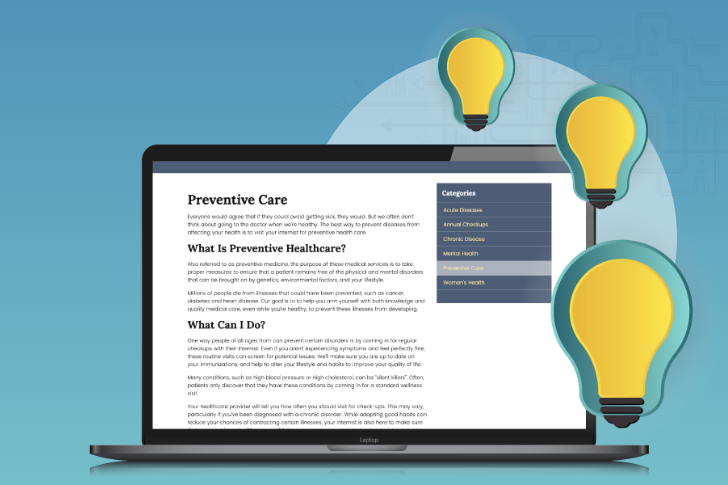Best Practices For Designing a Website For Doctors
Setting up a medical website for your practice is one of the best and most practical ways to spread the word about your services. With the world shifting more and more towards digital every day, having an online presence helps keep you from getting left behind. While the Boomers may still be asking their friends for doctor referrals, Millennials and Gen Z-ers lean a lot more heavily on search engines or social media when searching for a doctor. Your practice, as a business, needs to show up in their searches to stay relevant and keep growing.
Whether you’ve already set up your practice’s website or are still in the process of putting it up, observe these best practices to make sure that you get the most out of your online presence.
Why Set Up A Website For Your Practice?
First off, you might be wondering why you should even invest in a website when you can just put up a page on social media. A website adds formality to your business profile and also gives you more control over the information you present online and how it’s presented.
Consider it your digital calling card; a well-designed medical website is your brand ambassador, and it can provide a preview of the experience that patients can expect at your clinic.
But there are ways to set up your website that will help you get the most out of it. Observe the following best practices to make sure that your website is doing all it can.
Best Practices For Medical Website Design
Simple and Clean Design
A clean and straightforward website design has a universal appeal to all site visitors. More than just “looking good,” potential patients should be able to know, at first glance, what your practice is all about.
These should be some of your considerations:
- Color scheme—Avoid loud, bright colors. Consider, instead, cool, muted shades.
- Theme—Come up with a theme for some of the other design elements and keep them consistent throughout the site. Research current trends and update your theme as needed to keep the site looking fresh, but not so much as to confuse your practice’s brand.
- Header Images and Text—Think of the images and information you want to display on your homepage and make sure that they are accurate and on point.
- Icons and Font—Part of what makes a design cohesive includes the small elements that may often be overlooked. You should use icons from the same set design and font from the same set type.
User-Friendly
Make sure that your website is intuitive and well-organized. Avoid having blocks of texts that the reader needs to scour through, making it difficult for them to find the information they need.
An excellent medical website has information arranged logically, with easy navigation between pages that are related to one another. It also considers common behaviors of potential patients when navigating a medical website.
Below are the practices you can apply for a user-friendly site:
- A centralized menu with the major categories a patient would ask about. Common headers include:
- About The Doctor / Clinic
- Information about the Doctor’s Specialization
- Services
- FAQs
- Contact Information or Appointment System
- Add subsections to these categories to further break down the information and make it more digestible to the readers.
- A call to action at the end of every page quickly directs patients to other pages that might be of interest.
Mobile Responsive
Many web searchers now spend a large chunk of their online time on their mobile devices, so it is essential to make sure that your website is optimized for mobile web browsing. Your website may function well on a desktop, but the design and format can be skewed on mobile devices making it difficult to navigate. It’s an issue that can annoy users and possibly cause you to lose potential patients.
Talk to your web designer to make sure that your site is coded to function great on every device.
Complete and Accurate Information
People go to your website to get information about you, your practice, and the services you offer. As a medical practitioner, there are critical pieces of information you need to have on your website. Those include:
- Your schedule and contact details—Site visitors should be able to easily find the schedules and contact information for all offices.
- Information about your specialization and services offered—Have the complete details of your services up on the site so potential patients know you provide the services they are looking for. You’ll avoid wasting time for both patients and staff.
- FAQs—Many patients rely on the internet before they go on a doctor consultation and may go through a medical site’s FAQs to find out more about their condition. Be as transparent as possible in your FAQs.
Minimize the Medical Jargon
Medical terms can be daunting to patients. Imagine how stressful it can be to worry about a possible medical condition while trying to comprehend unfamiliar medical and scientific terms without the assistance of a professional. Use everyday language whenever possible to make your site friendly and understandable to all visitors.
Need To Consult For Your Medical Website Design?
The digital-savvy doctor may want to try his or her hand at designing a medical website. But to get the best results, for both your practice and your patients, you should consult with professional web developers. They have the experience and the know-how to help you grow your business’ online presence.



